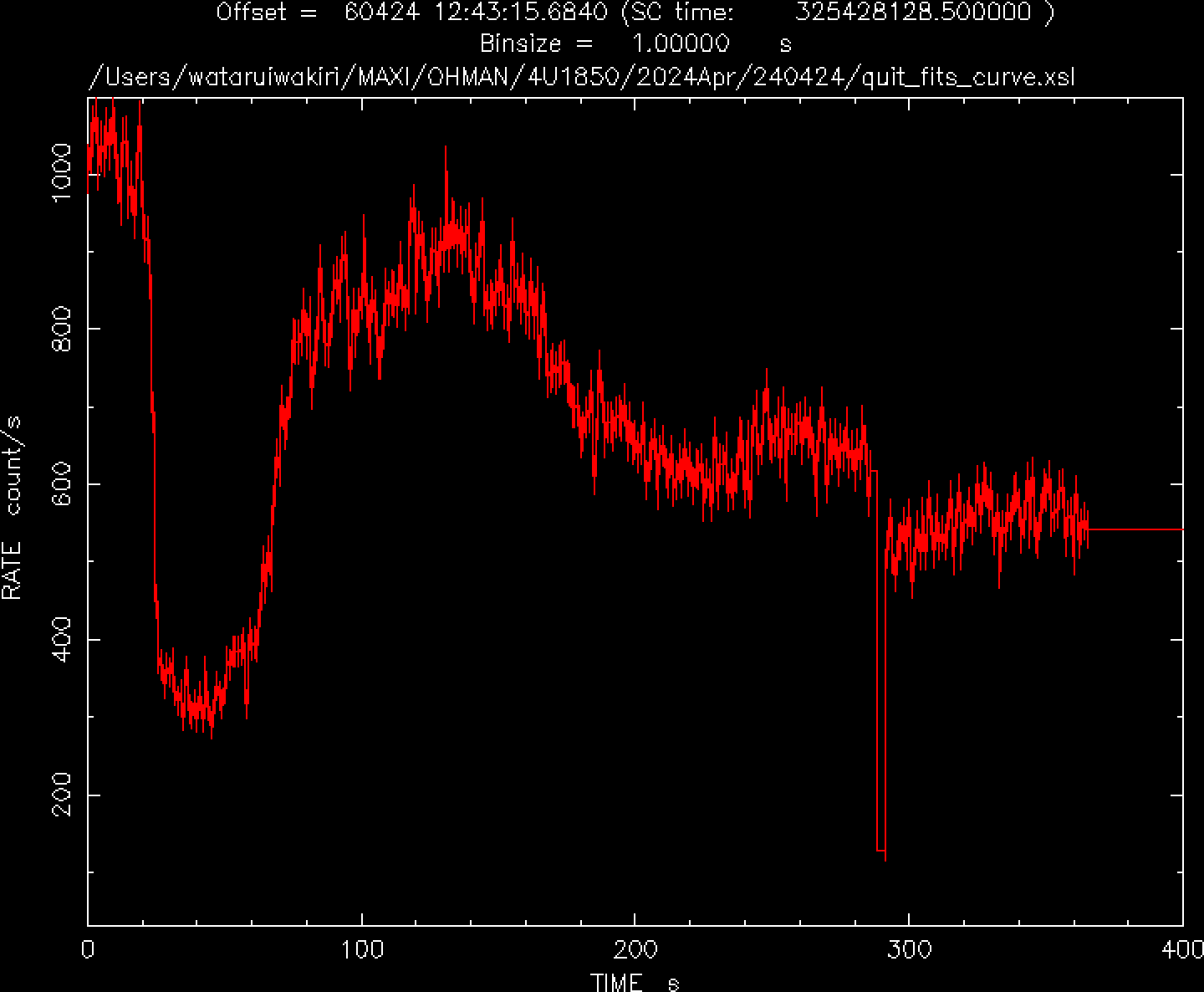NICER / ISS Science Nugget
for April 25, 2024
A speedy MAXI-OHMAN-NICER response
At 12:40 UT on April 24, JAXA's MAXI payload swept its gaze past the globular cluster NGC 6712, which hosts (among many other star systems) the known ultra-compact binary 4U 1850-087: a neutron star and low-mass companion star in a 20.6-minute orbit. MAXI's data stream - in addition to being telemetered promptly to the ground - is continuously screened by the OHMAN (Orbiting High-energy Monitor Alert Network) software payload running on a laptop within the JEM. OHMAN registered much higher X-ray brightness than expected (based on an internal catalog of X-ray sources known to MAXI) from the direction of 4U 1850, assessed that NICER would be able to point to it promptly, and issued a target-of-opportunity (TOO) command - without ground intervention - to NICER via an established channel. NICER was on-target in just over 3 minutes, capturing the chaotic decay of a bright, long-duration burst, the 3rd such event known from 4U 1850. (The second long-duration burst, in August 2023, was also an OHMAN success story, but visibility constraints lengthened the response time to 9 minutes in that case.) The 3-minute NICER response sets a new record for OHMAN and fulfills its promise of providing extremely rapid-response observations of the dynamic X-ray sky.
NICER's initial observation lasted 6 minutes, with followup snapshots acquired on several subsequent ISS orbits showing a characteristic decay time of 40 minutes. Long-duration bursts - thermonuclear fusion explosions on the surface of neutron stars fueled by helium nuclei deep in the stellar crust - are rare events. A handful that have been observed promptly have exhibited wild fluctuations in brightness on timescales of tens of seconds, primarily in the form of dips on an overall decaying trend. NICER's observation of 4U 1850 revealed such a dip, with spectroscopic capability that should be very informative about the origin of the dips and broader variability. A preliminary analysis reveals candidate emission and absorption lines, some of which strengthen and weaken as the burst decays; identifying and tracking these lines should help complete a still-murky theoretical picture of the chemical content of the "mushroom cloud" emanating from the neutron star and its impact on the flow of matter from the companion star that provides the nuclear fuel in the first place.
W. Iwakiri (Chiba U., Japan) and collaborators reported this OHMAN result in Astronomer's Telegram #
16600.

NICER X-ray brightness measurements beginning 3.1 minutes after the detection by MAXI of enhanced emission from the direction of the known ultra-compact binary system 4U 1850-087; this represents the most rapid successful OHMAN response to a celestial transient. Similarly deep swings in brightness were seen once before in a 2014 burst from 4U 1850, but with a much less sensitive telescope. The sharp dropout and decreased photon rate beginning at 290 seconds are due to changes in NICER's detector settings during orbit-sunrise, an operational mitigation for the instrument light-leak that has affected data acquisition in daylight since May 2023. (Figure credit: W. Iwakiri)
<< Previous
Main Index